#NYFA Fiscal Sponsorship
Explore tagged Tumblr posts
Text
Apply Now | Expand Your Fundraising Capacity and Resources with NYFA Fiscal Sponsorship

Our next no-fee application deadline is September 30, 2019.
New York Foundation for the Arts (NYFA) supports artists across disciplines by providing resources to help you develop creative projects, build organizations, and craft sustainable careers. We know that fundraising is critical to making your work, building your audience, and growing your career. NYFA’s Fiscal Sponsorship program helps you discover new funding opportunities and expand your reach!
What Does it Mean to Partner with NYFA?
NYFA Fiscal Sponsorship is a fundraising and administrative tool that allows your project or emerging organization to use NYFA’s 501c3 nonprofit status to fundraise for your project. In this partnership with NYFA, you gain:
Access to government, foundation, and corporate grants traditionally restricted to 501c3 organizations
The ability to offer all individual donors a tax deduction
Consultation services with NYFA staff
Fiduciary oversight and financial record-keeping
A personalized profile page on nyfa.org
Our Team Is Here for You
NYFA’s staff is made up of artists, filmmakers, and administrators with expertise in finance, fundraising, and project management. Our team is dedicated to providing individualized support to help you make your project or organization a success on your own terms.
We offer unlimited free consultations, with flexibility to meet in-person or remotely, on topics including:
Feedback on grant proposals
Fundraising strategies
Project management
Board development
Marketing materials
Apply for NYFA Fiscal Sponsorship
The next no-fee application deadline is September 30, 2019. To apply, your application must meet these basic eligibility requirements:
Your project/organization is arts-based
Your project includes a public benefit component
Your project is nonprofit in nature
You understand that this is not a grant program
Are you an arts collective or individual artist with a project? Apply here.
Are you an arts organization? Apply here.
To learn more about whether to apply as an artist project or emerging organization, read our FAQ section.
NYFA Fiscal Sponsorship’s quarterly no-fee application deadlines are September 30, December 31, March 31, and June 30. We also accept Out-of-Cycle Review applications year-round. Reach out to us at [email protected] for more information. Sign up for NYFA’s free bi-weekly newsletter to receive updates on future programs.
Image: Girls in Trouble (Sponsored Project), Image Courtesy: Alicia Jo Rabins
#fiscal sponsorship#nyfa fiscal sponsorship#nyfafiscalsponsorship#business of art#businessofart#fundraising#application deadline#applicationdeadline#announcements#instagram
1 note
·
View note
Text
NY / Katya Grokhovsky: Phone Home

Katya Grokhovsky, Phone Home, 2021, digital drawings on photo
Tiger Strikes Asteroid STAR Residency program presents: Katya Grokhovsky Dec 10th, 2021 – Jan 3rd, 2022 Performance/Closing: January 2nd, 2022, 6pm EST (additional information TBA)
Brooklyn, NY – Tiger Strikes Asteroid New York is pleased to announce Katya Grokhovsky as our 2021-2022 STAR resident. The STAR residency program will be held in the TSA NY gallery space, from December 10, 2021 to January 3, 2022. During her time as a resident artist, Grokhovsky will use the gallery for the production, rehearsal and studio development of a new piece entitled Phone Home. The residency will culminate in a livestreamed performance on January 2nd. More details to come as the residency progresses.
Exploring loneliness, dissociation, anxiety, tedium, longing and alienation, Phone Home presents an accumulative exhibition-installation-performance-studio, which evolves and morphs through art-time marking into a dysfunctional uncanny domestic valley-landscape. Situated inside a soft-sculptural fiber installation environment, accompanied by drawings and archival collages, an alien visitor protagonist performs routine Sisyphean gestures-tasks, such as sewing, ironing, cutting, writing, erasing, eating, stomping and dancing. The space proposes a peripheral mirage of otherworldly terrain, reflecting on the pandemic living and its effect on our psyche, body, and home. There will be a performance & closing reception with more details to follow.
Born in Ukraine and raised in Australia, Katya Grokhovsky is a New York-based artist, curator, and Founding Director of The Immigrant Artist Biennial. Her work has been exhibited nationally and internationally. Grokhovsky has received support through numerous residencies including The Elizabeth Foundation for the Arts (EFA) Studio Program, School of Visual Arts MFA Art Practice Artist in Residence, Kickstarter Creator in Residence, Pratt Fine Arts Department Artist in Residence, Art and Law Fellowship, MAD-The Museum of Arts and Design Studio Program, BRICworkspace Residency, Ox-BOW School of Art Residency, Wassaic Artist Residency, Atlantic Center for the Arts, Studios at MASS MoCA, NARS Residency, Santa Fe Art Institute Residency, Watermill Center, and more. She has been awarded the Brooklyn Arts Council Grants, NYFA Fiscal Sponsorship, ArtSlant 2017 Prize, Asylum Arts Grant, Australian Council for the Arts Grant, and Freedman Traveling Scholarship for Emerging Artists, among others. Grokhovsky earned an MFA from the School of the Art Institute of Chicago, a BFA from Victorian College of the Arts, Melbourne University, Australia and a BA in Fashion from Royal Melbourne Institute of Technology, Australia.
To schedule an appointment to visit the artist during her residency, contact Katya Grokhovsky, [email protected]

Katya Grokhovsky, Phone Home, parachute, print on fabric, performance, 2021
TSY NY STAR Residency program presents: PHONE HOME by Katya Grokhovsky
January 2nd, 2022, 6.30pm EST
Livestreamed on Instagram: @tsa_ny
Tune into Instagram Live by clicking the link above or following TSA_NY on Instagram on January 2nd, 2022 @ 6:30PM EST for PHONE HOME: Closing Performance by STAR Resident Katya Grokhovsky. This performance will be livestreamed from the TSA NY gallery space via our Instagram account. PHONE HOME explores dissociation, anxiety and loneliness through an alien visitor protagonist, who performs a Sisyphean gesture-ritual, whilst verbally reflecting on the pandemic living and its effect on our psyche, body, and notion of home.
0 notes
Text
Practice Lecture Series: Katya Grokhovsky
Grab your morning coffee, afternoon tea or an evening beverage, depending upon where in the world you are, and join us for an online lecture that will give us a deeper look into Katya Grokhovsky's practice.
Katya Grokhovsky was born in Ukraine, raised in Australia and is based in New York City. She is an artist, independent curator, educator and a founding director of The Immigrant Artist Biennial (TIAB) and Feminist Urgent (FU). Grokhovsky holds an MFA from the School of the Art Institute of Chicago, a BFA from Victorian College of the Arts, Melbourne University, Australia, and a BA (Honors) in Fashion from Royal Melbourne Institute of Technology, Australia. Grokhovsky has received support through numerous residencies and fellowships including The Elizabeth Foundation for the Arts (EFA) Studio Program, NYC, SVA MFA Art Practice Artist in Residence, Kickstarter Creator in Residence, Pratt Fine Arts Department Artist in Residence, Wythe Hotel Residency, Art and Law Fellowship, The Museum of Arts and Design (MAD) Studios Program, BRICworkspace Residency, Ox-BOW School of Art Residency, Wassaic Artist Residency, Atlantic Center for the Arts Associate Artist in Residence, Studios at MASS MoCA, VOX Populi Curatorial Fellowship, BRIC Media Arts Fellowship, Saltonstall Foundation for the Arts, NARS Residency, Santa Fe Art Institute Residency, Watermill Center Residency and more. She has been awarded the Brooklyn Arts Council Grant, NYFA Fiscal Sponsorship, ArtSlant 2017 Prize, Asylum Arts Grant, Chashama space to create grant, Australia Council for the Arts ArtStart Grant, NYFA Mentoring Program for Immigrant Artists, Freedman Traveling Scholarship for Emerging Artists and others. Her work has been exhibited extensively and has been reviewed in The New York Times, Hyperallergic, The Brooklyn Rail, LA Weekly, Huffington Post, Observer, Artnet, ArtNews, AUTRE, Contemporary Art Review LA, FRONTRUNNER magazine, Performance Is Alive, ArtBorne magazine, Expose magazine, Bad at Sports, BUST magazine, Arte Fuse, L magazine, Bedford + Bowery, and others.
The lecture will take place via Zoom on June 23rd at 9:15AM EST, and is free and open to the public.
0 notes
Text
Freelance Museum Educator, Groups and Tours
Freelance Museum Educator, Groups and Tours
New York Foundation for the Arts ABOUT ABOUT NYFA LEADERSHIP STAFF CAREERS NAMES YOU KNOW HALL OF FAME ANNUAL REPORT FINANCIAL STATEMENTS PROGRAMS FISCAL SPONSORSHIP ONLINE RESOURCES NYFA LEARNING AWARDS AND GRANTS RESOURCES NYFA CLASSIFIEDS ADVERTISING NYFA SOURCE BUSINESS OF ART LOANS AND FUNDS NYFA COACHING SUPPORT SUPPORT NYFA MAKE A GIFT GIVING CIRCLES OUR SUPPORTERS
View On WordPress
0 notes
Text
Conversations | Rica Takashima and Christine Yearwood’s “One Stop Family Pop Up”

The Fiscally Sponsored project celebrates maternal health at public events throughout New York City.
Visual artist Rica Takashima and Christine Yearwood, UP-STAND CEO/Founder, have teamed up to bring awareness to the maternal experience through their One Stop Family Pop Up, which is Fiscally Sponsored by New York Foundation for the Arts (NYFA). A social practice arts project, the mobile set-up shares accommodations through public events in New York City via workshops, a lactation tent, diaper changing station, a play-yard, and an experiential wearable pregnancy bump.
Read NYFA’s conversation with Takashima and Yearwood as they tell us more about making accessibility a reality in an inaccessible city, and celebrate maternal health with them at the 6th annual Boogie on the Boulevard in the Bronx on Sunday, September 15, where One Stop Family Pop Up will next be stationed.
NYFA: How did your One Stop Family Pop Up collaboration begin?
Christine Yearwood: At the end of 2016, Rica met me at a community market. As soon as Rica saw UP-STAND’s table, a showcase of products and opportunities to support pregnant women and families, she asked to collaborate. Rica, as a mother and artist, sympathized deeply. I was excited about an artistic advocacy partnership with Rica and we quickly thought up the concept for One Stop Family Pop Up.
Rica Takashima: One of our aims is to increase accessibility in public spaces for families. In the beginning, we provided a lactation space, a diaper-changing station, a play-yard, priority seating area, and a free artists’ tent and workshop. Then, we also added a pilot Ramp Project, working to install portable ramps in storefronts that have a step and are therefore inaccessible.These ramps are beautifully-designed and painted by community members; we hope to invite visual artists to add paintings to the ramps in the future.
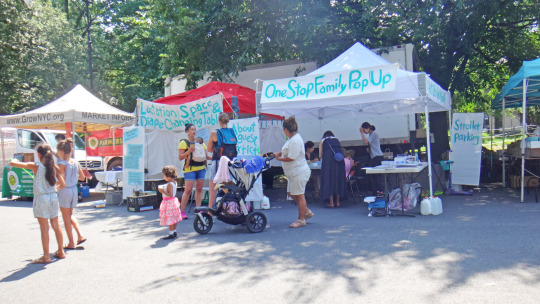
NYFA: For One Stop Family Pop Up, the experience includes a wearable Empathy Belly sculpture. What prompted you to highlight the pregnancy experience for others?
RT: This sculpture, made from a used children’s backpack, contains 20 lbs. of water-weights, the average weight gain around a pregnant woman’s abdomen. Wearing this sculpture, participants experience how much a pregnant woman is challenged just by sitting on a chair or putting on shoes. Not only that, they can also feel the heavy burden put on the body in other supportive areas, such as the back and legs.
CY: Many people, particularly males and young people, are not familiar with the typical challenges that come with pregnancy and are even less aware of the serious complications women frequently experience during pregnancy. Pregnancy is special, but can also be stressful, trigger health concerns, and limit mobility. Pregnant women need community members to understand and support them in order to produce healthy babies and best transition into their roles as mothers.
NYFA: The project now includes an open call for artists. How will presenting other artists’ work enrich the participant experience?
CY: After giving birth, many female artists experience career interruptions. We want to make a space for these artists to return and show their work. As an artist who overcame birth and child-rearing, and who is still struggling, Rica wants to make a path for others in her community.
RT: Artists often gain a new perspective through the experience of raising a child, and in turn provide participants with a new way to look at everyday things. For instance, one of our guest artists worked with participants to create reusable wraps made with cotton cloth and beeswax for an eco-friendly alternative to Ziploc bags or plastic wrap. Makers used cloth from a baby’s dress, or special shirt, to preserve and represent their special memories; this is a great way to give them new life!
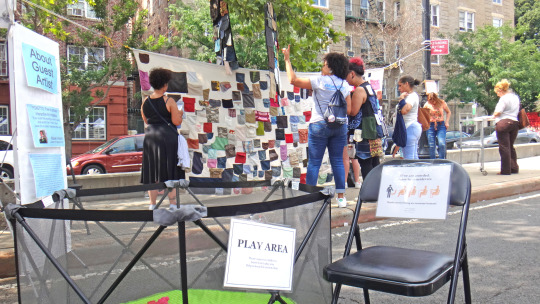
NYFA: What new or unique perspectives have your own maternity experiences given you, that you might not have expected?
CY: Being pregnant and parenting has made us realize that pregnancy and childrearing are treated as things that may be accommodated as a courtesy in New York, but that we provide almost zero institutional, standardized, practical support to make public spaces and transportation truly accessible. Everyone knows that New York is expensive, but it is also surprisingly taxing physically and emotionally to have children here. We want to change that.
NYFA: You work in social practice. How does art strengthen a community?
CY: We believe families should have access to socially-engaging art shows, workshops, and public art. All of us better contribute to society when able to connect and engage with our communities!
RT: Our art shows and workshops represent the personalities and communities of our artists. Attending our workshops creates dialogue that introduces and respects one another's origins, customs, lives, and generational differences.
NYFA: Why did you choose NYFA Fiscal Sponsorship?
CY: NYFA has been incredibly instrumental in our work. Their sponsorship helped us to articulate our project goals, create a project plan and timeline, and keep us accountable. We receive our monetary donations through the NYFA portal and are easily able to manage that account, and have been able to receive material donations via their sponsorship as well. Our projects have truly only been possible with NYFA’s ongoing support!
- Interview conducted by Priscilla Son, Program Officer, Fiscal Sponsorship & Finance
Images: Rica Takashima and Christine Yearwood, Collaboration with MOMpreneurs’ Show & Tell, 2017, Astoria Park, Queens, Photo Credit: Yasushi Tamaki; Collaboration with GrowNYC Green Market, 2018, Prospect Park, Brooklyn, Photo Credit: Rica Takashima; Collaboration with Boogie On The Boulevard, 2018, The Bronx, Photo Credit: Rica Takashima
#rikatakashima#rika takashima#christine yearwood#christineyearwood#social practice#socialpractice#arts advocacy#artsadvocacy#NYFA Fiscal Sponsorship#NYFAFiscalSponsorship#One Stop Family Pop Up#OneStopFamilyPopUp#maternal health#maternalhealth#announcements#instagram#interview#conversations
1 note
·
View note
Text
Conversations | Jennifer Karady at MASS MoCA

“In my staged narrative photographs with veterans, the collision or collapse of the soldier’s world and the civilian world enables the viewer to glimpse a fragment of what is going on in the soldier’s mind. They evoke the psychology of life after war—how the past can infiltrate the present—and the challenges that adjustment to the home front entails.”
Artist Jennifer Karady directs the Fiscally Sponsored project “Soldiers’ Stories from Iraq and Afghanistan,” where she creates photographs with veterans through a collaborative process. NYFA Fiscal Sponsorship recently spoke with Karady, a trained lens-based artist, about the project’s evolution and its inclusion in the MASS MoCA exhibition Suffering from Realness. Join Karady at the exhibit’s reception on May 25, 2019, and catch the show through December 2019. Download a PDF of the exhibition guide here.
NYFA: How did you become interested in the lives of soldiers and why did you turn to them as photography subjects?
Jennifer Karady: When the U.S. invaded Iraq, I was looking for a way to connect with the wars in my work. In 2004, I read several news articles on combat stress that were related to a mental health study of Iraq and Afghanistan veterans in the New England Journal of Medicine. I found myself deeply moved by the accounts from individual veterans detailing how the intensity of their war experiences returned with them to the civilian world.
In my artistic practice, I have long sought to reveal invisible and often dark, unspoken truths about human nature and the human experience through meticulously constructed staged photography.
In my staged narrative photographs with veterans, the collision or collapse of the soldier’s world and the civilian world enables the viewer to glimpse a fragment of what is going on in the soldier’s mind. They evoke the psychology of life after war—how the past can infiltrate the present—and the challenges that adjustment to the home front entails. Each image is presented with text or audio of the story that inspired the photograph.

NYFA: Did you have preconceived notions of the military that were changed through your work on this project?
JK: When I began this project, I didn’t have any experience with the military. My understanding of war was instilled by my parents, who were children growing up in Europe and Eastern Europe during World War II—so mine is a civilian perspective. My year of research into the mental health issues that veterans face led me to initially seek stories about traditional combat, but as the work progressed, I found and chose to represent stories from veterans that challenged assumptions and expectations of what a war story is.
NYFA: When we viewed the images for the first time, we were surprised to learn that you don’t use Photoshop. Why is working with traditional photography techniques important to your practice?
JK: My subjects are actively engaged in the subjective interpretation of their stories. Even though the photograph is a meticulously choreographed and carefully planned scene, there is an experiential and performative aspect to the photo shoot. The veteran enacts a pose or action from their chosen memory, in uniform, within a safe space, often in their everyday environment, surrounded by family and friends. The fact that I cannot change anything later maintains the truthfulness of the staged moment and the authenticity of the veteran’s participation. To digitally alter the photographs would feel antithetical to my process of collaboration.

NYFA: The exhibition at Mass MoCA includes both photographs from “Soldiers’ Stories from Iraq and Afghanistan” as well as a documentary about your process. What spurred you to make a film?
JK: I wanted to give viewers insight into the multi-layered, careful process of making a photograph, which can take months, and how the process can be helpful. I consider my process part of the work itself, and illuminating this allows viewers an additional way to connect with the work. The film chronicles the trajectory of the artistic process of my collaboration with Army veteran Lucero Morales in Azusa, CA, to make a photograph—from initial interviews to Lucero’s reaction to the final photograph nine months later.
NYFA: How has working in this new medium influenced your practice and what is the next chapter of “Soldiers’ Stories?”
JK: Making the “Soldiers’ Stories” film emboldened me to pursue an ambitious new project where I am working with fragments of veterans’ stories to explore the language of trauma and patriotism. Soldier’s Stories from Iraq and Afghanistan: Dissonance, an immersive and experiential multi-channel video and sound installation, will reveal the disconnect between the public visual display of patriotism on the Fourth of July and the way that soldiers often privately experience this holiday—how seemingly innocent displays of patriotism can be imbued with violence and memory.

NYFA: How has fiscal sponsorship impacted your work?
JK: The Fiscal Sponsorship team at NYFA has been instrumental in the forward momentum of my work. Last year, they encouraged me to apply for a 2019 grant from the New York State Council for the Arts (NYSCA) for Soldier’s Stories from Iraq and Afghanistan: Dissonance, a project I had been thinking about for a long time. When I did not think that I would be able to put together a competitive application within the time allotted, the team at NYFA offered persistent encouragement, guidance, feedback, and generosity. As a result, I earned important, early support for the production phase of this newly developed, multi-media installation. It is invaluable to feel that a professional arts organization is invested in my growth as an artist.
Are you an artist or a new organization interested in expanding your fundraising capacity through NYFA Fiscal Sponsorship? We accept out-of-cycle reviews year-round. No-fee applications are accepted on a quarterly basis, and our next deadline is June 30. Click here to learn more about the program and to apply. Sign up for our free bi-weekly newsletter, NYFA News, for the latest updates and news about Sponsored Projects and Emerging Organizations.
Images: Former Specialist Brittny Gillespie, 139th Military Police Company, 16th MP Brigade, U.S. Army, veteran of Operation Iraqi Freedom, with Volunteers of America Los Angeles Battle Buddy Elizabeth Saucedo and friend Corey, Los Angeles, CA, 2014, Chromogenic color print; Staff Sergeant Kyle Winjum, Explosive Ordnance Disposal Technician, U.S. Marine Corps, veteran of Operation Enduring Freedom and Operation Iraqi Freedom, with fellow Marines; Twentynine Palms, CA, 2014, Chromogenic color print; Former Specialist Lucero Morales, 25th Transportation Company, 25th Infantry Division, U.S. Army, veteran of Operation Iraqi Freedom, with children Emma and Nicolas, Azusa, CA, 2015, Chromogenic color print; and Former Lance Corporal West Chase, U.S. Marine Corps, Combat Service Support Company 113, I Marine Expeditionary Force, veteran of Operation Iraqi Freedom and Operation Enduring Freedom, with fiancée, Emily Peden; Ann Arbor, MI, 2014, Chromogenic color print. All Images from “Soldiers’ Stories from Iraq and Afghanistan,” Credit: Jennifer Karady.
#fiscal sponsorship#nyfa fiscal sponsorship#nyfafiscalsponsorship#jennifer karady#jenniferkarady#soldiersstories#soldiers stories#mass moca#massmoca#suffering from realness#sufferingfromrealness#announcements#instagram#artistnews#artist news#interview#conversation
1 note
·
View note
Text
Conversations | Oren Rudavsky on "Joseph Pulitzer: Voice of the People"

New documentary, which highlights Pulitzer’s legacy in the newspaper industry, will make its television premiere on PBS on Friday, April 12.
Joseph Pulitzer: Voice of the People follows the famed newspaper publisher’s legacy in the industry, foregrounding his commitment to freedom of the press. The documentary film, directed by Oren Rudavsky and Fiscally Sponsored by The New York Foundation for the Arts (NYFA), followers Pulitzer’s beginnings in journalism while exploring the professional and personal trials he faced throughout his journey. It answers the question: “How did Joseph Pulitzer, once a penniless young Jewish immigrant from Hungary, come to challenge a popular president and fight for freedom of the press as essential to our democracy?”
Joseph Pulitzer: Voice of the People will be screened at The Morgan Library & Museum on Friday, March 29 at 7:00 PM. Rudavsky will be in attendance to introduce the film, which will be followed by a discussion with historian David Nasaw. The documentary will also make its television premiere on Friday, April 12 at 9:00 PM on PBS (check local listings) and on American Masters beginning Saturday, April 13.
NYFA had the opportunity to speak with Rudavsky about his inspiration and process behind Joseph Pulitzer: Voice of the People. Read the interview below:
NYFA: What sparked your interest to direct a documentary about the life of Joseph Pulitzer?
Oren Rudavsky: In 2013, Bob Seidman (the film’s co-writer and producer), whom I have previously worked with on a film, approached me with the idea of making a film about Joseph Pulitzer. All I knew about Joseph Pulitzer was that he had created the Pulitzer Prizes. When I started to dig into who Joseph Pulitzer was, I realized that he was not only a really interesting guy, but that he was quite relevant to today’s America, living in a country run by the Trump Administration. Pulitzer published everything he thought was news and didn't care who he harmed, making him an equal opportunity offender and critic of the way things are in the world. He was just a fascinating person to make a film about.

NYFA: Working on this documentary must’ve brought along some notable anecdotes. Are there any you wish to share?
OR: One of the joys of working on this film was working with the incredible talent brought to bear. This involved working with Adam Driver as the narrator as well as other voice actors (Liev Schreiber, Tim Blake Nelson, Rachel Brosnahan, Lauren Ambrose, Hugh Dancy, Billy Magnussen, Sebastion Stan, Ryan James Hatanaka) whom we got to share some time with. Each actor brought their own talents to the table such as their accents and acting styles of all sorts. These folks were all professionals and knew how to deliver. The other aspect of this film that was spectacular was finding a period boat up in Maine to shoot the boat sequences offshore, through fog and waves. My favorite moment was when Bob Seidman drifted off in a rowboat with our talent. They drifted off into the thick fog and we thought we'd never see them again. Luckily we had a motor boat that went after them, but that disappeared as well. After a heart-pounding 15 minutes, they reappeared and production was saved.

NYFA: Your documentary brings forth a prime example of aggressive journalism and freedom of the press during the late 19th and early 20th centuries. What from Pulitzer's legacy do you feel has bears the most weight in today’s journalism?
OR: One thing primarily relevant about Pulitzer today has to do with what's going on politically with a president who seems to disrespect the news media, and that is identical to the conflict between presidents and the press in Pulitzer's era. He had to take on Teddy Roosevelt over improprieties having to do with the building of the Panama Canal. Those were stories that Pulitzer delved into. Because this was infuriating to Teddy Roosevelt, his administration created a smear campaign against Pulitzer. Sounds a little familiar? But Pulitzer took Teddy Roosevelt to the Supreme Court, and it was a remarkable time.

NYFA: Did you encounter any surprises while gathering archival information on Pulitzer’s life and newspaper companies? If so, was there anything you wish you could’ve added to the film?
OR: Though not shown in the film, one tragedy I came to realize was coming across libraries that have systematically destroyed the originals of newspapers in favor of microfilm, which just simply does not preserve the tactile or visual quality of those newspapers. At Duke, however, I was able to see the original newspaper prints in its best-preserved quality making one see the history of those newspapers, the beauty of the illustrations and the typography, and you can't really understand it until you have a newspaper in your hands. I could've spent hours flipping through every page because it was just filled to the brim with interesting stories, and through my archival digging I understood immediately why Pulitzer was so fabulously successful before internet and TVs.
Why did you choose NYFA Fiscal Sponsorship?
OR: The staff at NYFA is extremely responsive and helpful in helping with submission of grant proposals and funding issues. They are lovely people and that is one key reason I work with NYFA. The system works very well. I know I am working with highly-responsible and competent people.
-Interview conducted by Eleysha Sajous, Fiscal Sponsorship Intern
Are you an artist or a new organization interested in expanding your fundraising capacity through NYFA Fiscal Sponsorship? We accept out-of-cycle reviews year-round. No-fee applications are accepted on a quarterly basis, and our next deadline is March 31. Click here to learn more about the program and to apply. Sign up for our free bi-weekly newsletter, NYFA News, for the latest updates and news about Sponsored Projects and Emerging Organizations.
Images: Courtesy of Oren Rudavsky
#fiscal sponsorship#nyfa fiscal sponsorship#nyfafiscalsponsorship#eleysha sajous#eleyshasajous#joseph pulitzer#josephpulitzer#orenrudavsky#oren rudavsky#artist news#artistnews#announcements#instagram
1 note
·
View note
Text
Event | Meet the Funder: New York State Council on the Arts

Are you an arts organization planning to apply to NYSCA's Special Arts Services funding program? Here is an opportunity to learn more and ask questions about the application process.
New York State Council on the Arts (NYSCA) is a leading source of funding for New York-based arts organizations and individuals. Learn how to navigate the application process for the Special Arts Services (SAS) Program at The New York Foundation for the Arts (NYFA) on Thursday, February 28. Arian Blanco, NYSCA Program Director, will lead the information session and answer your questions after a short presentation. Blanco will be joined by Program Officer Kavie Barnes.
Special Arts Services (SAS) supports programs that engage the arts to address the changing needs of New York’s most vulnerable populations, including people in geographically-remote areas with limited cultural offerings; disabled communities; the aging; impoverished and homeless populations; and court, jail, and prison-involved juveniles and adults.
SAS funding supports both established and emerging organizations. The program encourages collaborations and innovative projects, either multi-disciplinary or focused on a specific discipline of the performing arts, visual arts, or media. SAS also supports professional arts training, promoting advanced study as well as the entry of underserved artists pursuing arts careers. All applicants must have proof of New York State residency.
Program Title: Meet the Funder: NYSCA - Special Arts Services (SAS) Date and Time: Thursday, February 28, 6:00 PM - 8:00 PM Location: The New York Foundation for the Arts, 20 Jay Street, Suite 740, Brooklyn, NY 11201 Cost: Free with RSVP Register: RSVP here via Eventbrite
Getting to NYFA Closest Subway to 20 Jay Street: *F to York Street station Next Closest Subway: *A to High Street/Brooklyn Bridge station
Event Accessibility The New York Foundation for the Arts is committed to making events held at the NYFA office at 20 Jay Street in Brooklyn accessible. If you are mobility-impaired and need help getting to NYFA’s office for events held on premises, we are pleased to offer complimentary car service from the wheelchair accessible Jay Street-MetroTech subway station courtesy of transportation sponsor Legends Limousine. Please email [email protected] or call 212.366.6900 ext. 243 between 9:30 AM - 5:30 PM at least three business days in advance of the event to coordinate. The elevator access point for pickup is at 370 Jay Street, on the NE corner of Jay and Willoughby Streets.
Are you an artist or a new organization interested in expanding your fundraising capacity through NYFA Fiscal Sponsorship? We accept out-of-cycle reviews year-round. No-fee applications are accepted on a quarterly basis, and our next deadline is March 31. Click here to learn more about NYFA’s Fiscal Sponsorship program and to apply.

Image: Courtesy of NYFA
#nysca#newyorkstatecouncilonthearts#new york state council on the arts#nyfa fiscal sponsorship#nyfafiscalsponsorship#grantopportunities#grants#artist grants#artistgrants#grant opportunities#events#announcements#instagram
2 notes
·
View notes
Text
Conversations | Flavio Alves and Roy Wol’s “The Garden Left Behind” Premieres at SXSW

“We respect each other’s positions and collaborate on almost every decision...Instead of putting each other into boxes, we work as a family.” - Roy Wol
This month, The New York Foundation for the Arts (NYFA) will celebrate the world premiere of NYFA Fiscally Sponsored film The Garden Left Behind at SXSW. This trailblazing film traces the relationship between young Latina trans woman Tina and her grandmother Eliana as they navigate Tina's transition and struggle to build a life for themselves as undocumented immigrants in New York City. In advance of the premiere, Writer/Director Flavio Alves and Producer Roy Wol spoke with NYFA about their collaborative approach to filmmaking. NYFA also Fiscally Sponsored their 2014 film Tom in America.
Public screenings of The Garden Left Behind will begin on March 9; tickets and passes are available on www.sxsw.com.
NYFA: Talk to us about the producer/director relationship. Who does what and do you ever trade roles?
Flavio Alves: Roy and I have been working together for almost 10 years, so we pretty much know each other’s strengths and weaknesses. He has so much to offer and it would be foolish of me to be autocratic. I can’t see myself making any directorial decisions without consulting Roy.
Roy Wol: Flavio is the best partner I could ever have. The result of our partnership gave birth to many projects including the latest (and the best) The Garden Left Behind, which will soon have its world premiere at SXSW! I see the director/producer partnership as a holy thing. Perhaps I’m an idealist, but I believe that deep human connection intuitively inspires us to reach our own unique potential. Flavio is a force of nature. He not only inspires me but also everyone else around him. We respect each other’s positions and collaborate on almost every decision, while also understanding that both of us have talents in different aspects of the work. Instead of putting each other into boxes, we work as a family.
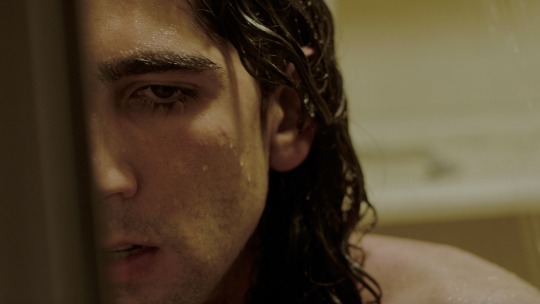
NYFA: Why premiere at SXSW? What attracted you to an interdisciplinary festival?
FA: SXSW is a prestigious festival and it’s every filmmaker’s dream to play there. Additionally, SXSW is a forum where both major studios debut their films as well as smaller independent films screen. This mix is inspiring.
RW: SXSW is about creating conversations around social matters as well as promoting innovative ideas. Our film checks both of these boxes as it has the potential to spark extensive, meaningful conversation. It’s also unique since it was funded through a brand new fundraising methodology we developed where we used eBay as a crowdfunding platform to raise over $100,000 by selling donated items. Most importantly, there is something in the air in SXSW and Austin. It’s a place for discovery.
NYFA: You started production in 2014. How have recent world events infiltrated the film? Did the film stray from your original vision?
FA: Once you start your research about a specific subject, you don’t know how the story will evolve. To me, it’s an organic process and you have to be willing to follow the curve wherever it takes you. And, as a storyteller, you will be doing a disservice if after your research, your project is still the same as your original version.
RW: If five years ago you told me the world would be this divided, I wouldn’t have believed you. Recent world events have had a major impact on the film. The main impact will be in the conversations that follow the film’s premiere - undoubtedly our film is incredibly timely.
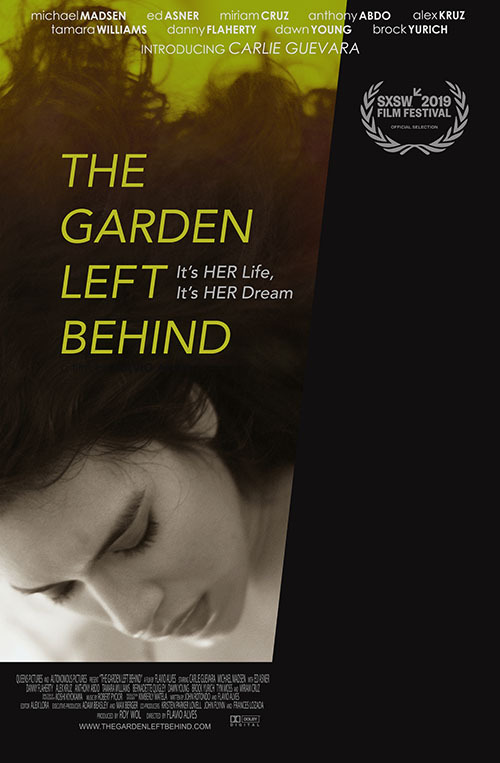
NYFA: Roy, what prompted you to start your own production company? What challenges do independent producers face?
RW: The list of challenges indie producers face is very long! First, producing is not for everyone. It requires a 24/7 approach. Or at least it does at this level. So time and work/life balance is a constant struggle. Producing a film can take a long time so you need to build an income system for yourself in order to continue doing it. An indie producer’s best weapon is their individual taste. What makes an independent producer is their taste, connections, ability to fundraise, and foresight. All of which I am still working on further developing in myself.
NYFA: What’s your advice for emerging filmmakers?
FA: Make at least three successful short films before moving to a feature length film. The people who stay with you after that are the ones who will help you to make your first feature film. Gather resources, make connections, and shape your filmmaking skills. The ones who can play the long game have more chances to survive in this business.
RW: Create a strong core team. Work very hard. Develop your taste. Do not depend on others for fundraising and marketing—learn these skills. Do not finish your film until there is absolutely no doubt in your and your partners’ minds that the film has reached its full potential. Whenever you get burnt out know that there is light at the end of the tunnel. Never give up on your “child" or film. Be resilient.
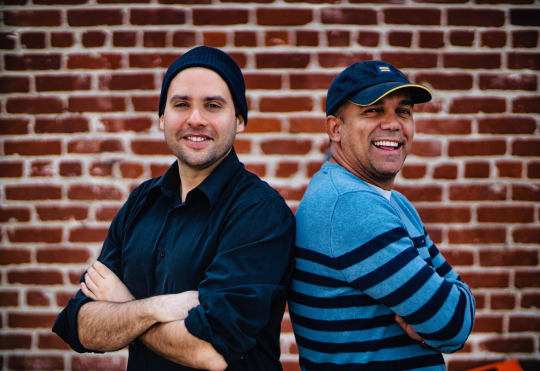
NYFA: You’ve worked together on three films. Will you team up again?
FA: Our work as director/producer is like a marriage. We keep working together because we are storytellers and we have tremendous respect for each other. So yes, we have several projects in the pipeline.
RW: Together, Flavio and I have continuously excelled. Each day we surprise each other with each other’s wisdom in different aspects of this work. Hell yeah, we are teaming up again!
- Interview conducted by Madeline Scholl, Program Officer, NYFA Fiscal Sponsorship
Are you an artist or a new organization interested in expanding your fundraising capacity through NYFA Fiscal Sponsorship? We accept out-of-cycle reviews year-round. No-fee applications are accepted on a quarterly basis, and our next deadline is March 31. Click here to learn more about the program and to apply. Sign up for our free bi-weekly newsletter, NYFA News, for the latest updates and news about Sponsored Projects and Emerging Organizations.
Images: film stills, The Garden Left Behind; world premiere poster, 2019; and Roy Wol and Flavio Alves, Photo Credit: Emre Baser; all images courtesy of Flavio Alves and Roy Wol
#fiscal sponsorship#nyfa fiscal sponsorship#nyfafiscalsponsorship#madeline scholl#madelinescholl#conversations#business of art#businessofart#artist news#sxsw#thegardenleftbehind#the garden left behind#flavioalves#flavio alves#roy wol#roywol#instagram#announcements
1 note
·
View note
Text
Year in Review | Fiscal Sponsorship in 2018

To wrap up what has been an eventful year, NYFA is commemorating our artists’ blossoming achievements!
NYFA Fiscal Sponsorship is proud to support these projects by helping them fundraise and bring their work to wider audiences. Here are a few highlights from this past year:
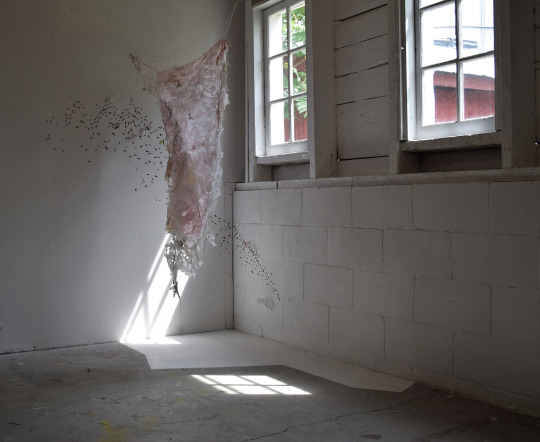
Monika Fabijanska THE UN-HEROIC ACT: Representations of Rape in Contemporary Women’s Art in the U.S.
In September, art historian and curator, Monika Fabijanska, launched the impactful exhibition, THE UN-HEROIC ACT: Representations of Rape in Contemporary Women’s Art in the U.S., at John Jay College of Criminal Justice. Fabijanska’s vision for the curated exhibition was sparked by seeing Carole Thea’s Sabine Woman sculpture in 2015. The exhibition was a milestone not only for female artists who aim to dismantle the romantic representations of rape in the media, but also for survivors whose voices and perspectives have been left out in contemporary art. The New York Times featured THE UN-HEROIC ACT as an exhibition in which “female artists delete rape’s ‘heroic’ underpinnings.”
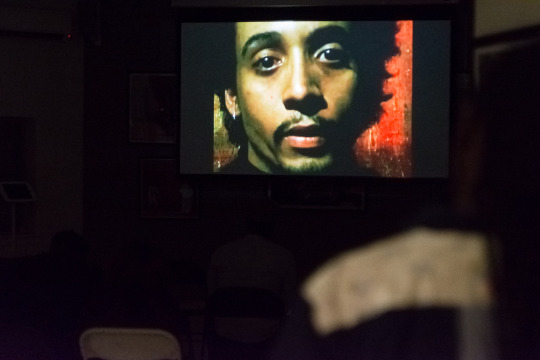
The Luminal Theater
Founded by Curtis John, The Luminal Theater is a microcinema based in Central Brooklyn which provides a platform for filmmakers and film enthusiasts who exhibit media of the African diaspora. The Luminal Theater has catered to their growing audiences by screening films from emerging filmmakers and film enthusiasts through their Cinema Garden Parties and special film screening events. In June, The Luminal Theater’s short films Kafou and Tezen were shown at the Brooklyn Academy of Music as part of BAM’s Caribbean Film Series event. The organization also co-hosted Selebrasyon!, a film festival celebrating film made by the Caribbean diaspora, with Haiti Cultural Exchange, Caribbean Film Academy, and Hudson Guild. The Luminal Theater was awarded a 2018 NYSCA Grant.
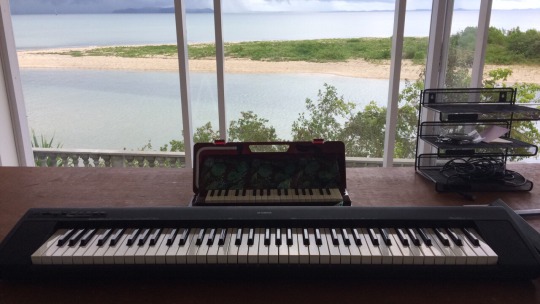
Deanna Witkowski Nossa Senhora Suite
Pianist and Composer Deanna Witkowski has had a jam-packed year with Nossa Senhora Suite, a musical project which fuses Afro-Brazilian ritual music and jazz. The idea for Nossa Senhora Suite grew from Witkowski’s first visit to Brazil in 2006, where she returned as a performer in 2007 and 2010. Witkowski was selected as a 2018 NYSCA individual artist grant recipient and was also awarded a residency fellowship at the Sacatar Institute in Itaparica, Bahia, Brazil, where she met fellow pianists, held workshops, and continued doing research for Nossa Senhora Suite. Witkowski’s next performance is on Saturday, December 8 at The Hillman Center in Pittsburgh, PA.
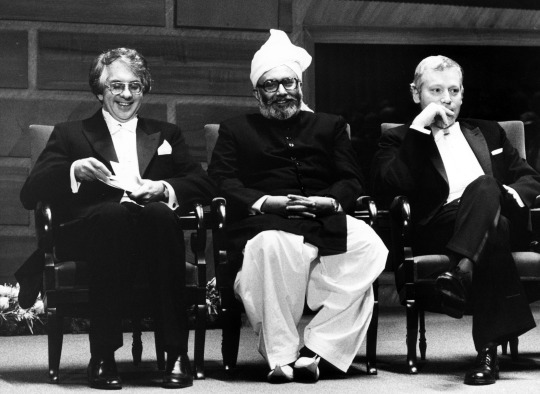
Zakir Thaver Salam - The First ****** Nobel Laureate
After a decade of research and compilation, Zakir Thaver premiered the documentary film Salam - The First ****** Nobel Laureate to audiences in the U.S. and abroad. The documentary follows the history of Nobel Prize-winning Pakistani Physicist Abdus Salam, who made a profound impact on modern science but who was shunned in his home country because of his religion. In 2018, Salam has managed to snag a plethora of awards and official selections from the Raw Science Film Festival, Washington, D.C. to Chicago’s South Asian Film Festival, and the Human Rights Film Festival, to name a few. The next screening of Salam will be on Saturday, December 15 at The South Asian International Film Festival in the NYIT Auditorium on Broadway in New York City.
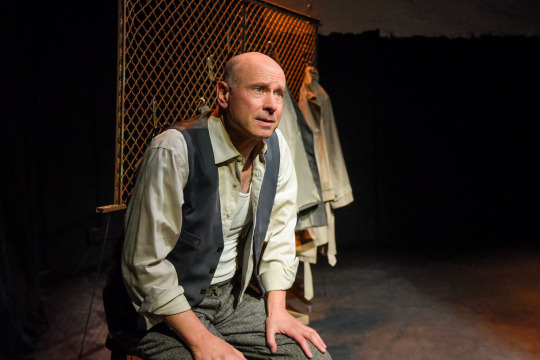
Roger Grunwald The Obligation
Internationally-acclaimed actor Roger Grunwald premiered his one-man performance The Obligation at Potrero Stage in San Francisco, CA. The story follows the life of a Polish Jew living in Bialystok during World War II. The Obligation was a 2018 Theater Bay Awards Finalist for Outstanding Solo Production, Outstanding Lighting Design, and Outstanding Sound Design. Broadway World called Grunwald’s performance “a thoroughly compelling, thrilling experience.”
- Eleysha Sajous, Fiscal Sponsorship Intern
NYFA Fiscal Sponsorship’s next quarterly no-fee application deadlines are December 31, March 31, June 30, and September 30, with out-of-cycle reviews accepted year-round. You can learn more about NYFA’s Fiscal Sponsorship program here.
Images From Top: The Obligation, Courtesy of Roger Grunwald; The Coerced Contact, Roya Amigh, Courtesy of Monika Fabijanska; Act of Protest, Courtesy of The Luminal Theater; Sacatar Institute in Brazil, Courtesy of Deanna Witkowski; Abdus Salam, Courtesy of Zakir Thaver; The Obligation, Courtesy of Roger Grunwald.
#nyfa fiscal sponsorship#fiscal sponsorship#eleysha sajous#artist news#roger grunwald#the obligation#zakir thaver#salam#abdus salam#deanna witkowski#nossa senhora suite#curtis john#the luminal theater#monika fabijanska#the un-heroic act#instagram
4 notes
·
View notes
Text
Conversations | Barbara Campisi’s “A Sound of Light, appearing around the bend” Brings Light and Dance to FiveMyles Gallery

“I hope this participatory exhibition encourages a sense of play, and invites people to see art as something to explore and interact with, and that they take this experience into the world.”
Barbara Campisi’s upcoming installation, A Sound Of Light, appearing around the bend, captures elements of light, movement, and space. Viewers will not only be able to walk through the encompassing maze-like installation featuring dancers of various backgrounds covered in LED-lights, but will also have the chance to engross themselves by participating in this light-based artwork.
The Fiscally Sponsored Project will be on view at FiveMyles Gallery from February 9 through March 16, with several special events in store. The February 9 opening will feature a dance performance by Belinda Becker with music by Mecca Bodega. Catch a dance performance by Laura Ward and Cassie Roberts of the Octavia Cup Dance Theatre with music by Big Lazy on February 24, followed by a conversation with Barbara Campisi and Linnaea Tillet on March 10 and a dance performance by Pat Hall and drummers on March 16.
NYFA had the opportunity to speak with Campisi about A Sound Of Light, appearing around the bend in advance of its opening. Read the interview below:
NYFA: Why did you choose FiveMyles Gallery in the Crown Heights neighborhood of Brooklyn as your installation site? What are you hoping the community learns while exploring and participating in your full-room exhibition?
Barbara Campisi: First was the location. Hanging around the gallery, I appreciated how engaged the multicultural neighborhood is. Neighbors stop by all the time, and I love the gallery’s non-precious, inclusive vibe. Second was the physical space: large and dark grey. And when I met FiveMyles director and artist Hanne Tierney, and saw her wonderful kinetic, theatrical sculptures, I knew we would share a point of view. She’s been great to work with. After exploring the piece, I hope the community will come away with a sense of wonder about the world, how we perceive things, and how our bodies physically relate to physical space.
NYFA: Your exhibition will include a participatory component where the viewers will be provided an LED light. How do you think this will change the experience of participants?
BC: The participatory component will temporarily de-mystify the piece, and offer a chance for viewers to dictate their own experience. When you enter the maze you’re surrounded by lights and disoriented; it’s hard to tell where the lines of light are coming from and how the space is configured. By shining your own light, you can begin to figure out what is happening, and add to the effect. As you walk around, the lines of light you create disappear and reappear, intersecting with other people’s moving lines. I hope this participatory exhibition encourages a sense of play, and invites people to see art as something to explore and interact with, and that they take this experience into the world.

NYFA: A Sound of Light, appearing around the bend includes performances from several dancers from various cultural backgrounds. What was your motivation for adding a performance component to your exhibition? What was the selection process like?
BC: Sculpture and dance have always been interconnected for me. I started making installations that fully inhabit space after I began studying Afro-Caribbean dance and experienced space in a visceral way. I have long wanted to combine the two, and in the process of making this piece, I realized this would be the time. The selection process was organic because I know so many great dancers who I have followed or danced with over the years. It was important for me to choose a cross-section of different traditions to represent, but it was difficult to narrow it to just a few.
NYFA: Light and movement are core components of your installation. What life experiences led you to create an exhibition combining both elements?
BC: My experience with dance and movement led to working with form in space. Dance is also about music and the process of composing in light feels very musical to me, almost a synesthetic experience. Like everyone, I dance around in the studio, and with this piece, the cacophonous movement of the lights on the panels juxtaposed against the quietude of the piece with static lights was interesting.
NYFA: Why did you choose NYFA Fiscal Sponsorship?
BC: I have been reading the NYFA newsletter since it was in paper form. When I embarked on this piece, I decided to get a fiscal sponsor so that I could raise funds in a tax-deductible way. I saw the deadline in the newsletter, and read about all of the benefits offered to sponsored artists, and NYFA seemed the obvious choice. I later took advantage of other offerings, such as grant reviewing, which has been so helpful.
-Interview Conducted by Eleysha Sajous, Fiscal Sponsorship Intern
Are you an artist or a new organization interested in expanding your fundraising capacity through NYFA Fiscal Sponsorship? We accept out-of-cycle reviews year-round. No-fee applications are accepted on a quarterly basis, and our next deadline is March 31. Click here to learn more about the program and to apply. Sign up for our free bi-weekly newsletter, NYFA News, for the latest updates and news about Sponsored Projects and Emerging Organizations.
Image Credits: Courtesy of Barbara Campisi
#fiscal sponsorship#nyfa fiscal sponsorship#interview#conversations#barbaracampisi#barbara campisi#installationart#installation art#interactive art#interactiveart#lightinstallation#light installation#soundinstallation#sound installation#eleysha sajous#eleyshasajous#instagram
1 note
·
View note
Text
Business of Art | Music Licensing for Documentary Films
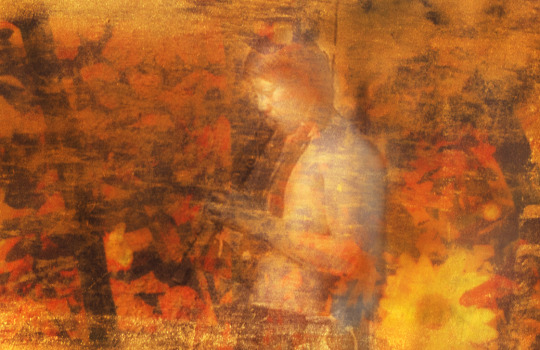
Create the perfect atmosphere with music.
Music can have an enormous influence on the mood and impact of your film, but you need to remember that virtually every piece of included music, no matter how long it is played, will need to be licensed and paid for.
During a workshop that took place at The New York Foundation for the Arts (NYFA) in November 2018, Peter Miller, Emmy and Peabody Award-winning filmmaker and music supervisor, shared his experience and philosophy on how to tackle licensing music for documentary films. Among other helpful advice, we learned that music clearance should be considered at the beginning of creating your film, not just in post-production. We also learned that it can take the wits of a “music historian” to find the right license. Read on and learn more via this helpful step-by-step guide to getting music cleared for your films.
Step 1: Consider Your Budget (and Potential Alternatives)
Having a very particular song in your film can be rewarding, but considering your budget (and your time) is an important first step. Licensing a song, even if it only plays for five seconds in your film, can be quite expensive. Ask yourself if the specific piece of music you want is vital or if there might be an alternative, such as:
Hiring a musician or creating your own score. Creating your own score will add an element of uniqueness to your film by composing a song that follows the emotional structure of the film (rather than vice versa). It gives you the freedom to use the song in any way that you like, in any medium, for all eternity. It is also cost-effective.
Using library music. Library music, also known as production music or stock music, is recorded music that can be licensed to customers for use in a film or other media. Although library music can be seen as generic or less authentic, it’s decent quality and written and recorded by professional musicians. You might be surprised by how many T.V. shows use library music in their episodes. You can find information about and links to music libraries by doing a basic internet search.
Step 2: Know What Kind of Rights You Need
Music licensing requires acquiring two types of rights (typically from two or more different entities that will need to be cleared). There’s a ‘master license’ and a ‘synch license.’ A master license is a license that gives you rights to use the original recording of that song. This is typically derived from the music record label. A synch license is the actual written song (lyrics and notes) itself. The license will be issued by the entity that published the song. In most cases, you will need both licenses. If you use, for instance, Adele’s Rolling in the Deep, you will need to acquire both.
There are a few exceptions where you will only need one license over the other. An example of this is when you have filmed someone singing a song and used that recording in your film. In this circumstance, the recording is yours, but the actual lyrics and composition are not. You will only need a synch license.
In all cases, whenever there is music or singing, do your research and acquire the appropriate rights to have them in your film.
Step 3: Is the Song in the U.S. Public Domain? It’s Not Likely.
Don’t bet that a song is in the public domain. Music that was written and recorded before 1923 is considered to be in the public domain in the United States. All music created after 1923 is, in most cases, protected by copyright. If it’s a song deeply embedded in our culture, or even a protest song, don’t assume it’s in the public domain—always double-check!
Sometimes a published song is in the public domain, but the version that you will be using in your film is a brand new recording, sung by a different artist. You will need to acquire a license for the recording. (In this case, you would only need to acquire a master license, rather than the synch license).
Step 4: Do Your Music History Research!
Based on Peter Miller’s experience, it is a tricky endeavor to find the right entities that produced the original recording or published the actual song. Thankfully, Miller provided tips!
To find the right recording entity and publishers will require the skills of a music historian. Here are the best sources to find the respective music licenses you will need to ask for from the correct entity:
The Search for a Master License
The search can get convoluted. As copyright law is different in Europe and music rights are more freely available there, European countries are often the producers of various compilation albums like “Best Rock ‘N Roll Hits of the 70’s” or “Most Romantic Pop Songs.” If you look at the distribution details, a specific music distributor will be listed. But, that’s not the original recording or publishing source.
Believe it or not, when it comes to knowing who recorded an album for an artist at a given time, Wikipedia is often your best source. Do a search with the artist’s name and see which record labels they were affiliated with when they originally recorded the song.
Allmusic.com is another great resource to assist your music history search. The downside to this website is that it will list all of the European labels that produced a compilation album, in addition to the original label, which can get confusing to sift through.
The Search for a Synch License
Performing rights societies ensure that songwriters are compensated for their music and provide the public with easy-to-search databases to find what entities own the publishing rights.
The difficult part about acquiring a synch license is that there can be multiple publishers that own various percentages of shares for the song. When this is the case, you will need to request the license from each publisher.
The two most popular societies are:
The American Society of Composers, Authors and Publishers (ASCAP)
Broadcast Music, Inc. (BMI)
Roughly half of all songs are controlled by ASCAP and the other half are controlled by BMI. If a song is not found in their databases, check the Society of European Stage Authors and Composers (SESAC).
Step 5: It’s Time to Request the License!
Once you’ve found the right entities to request licensing, remember to keep your request simple, as companies are sifting through multiple requests at a given time.
Get straight to the point and be logical about your request based on the life of your film. In your request, include the following information:
Synopsis: what is your film is about? (1 sentence!)
Term: For how long you will need the license?
Territory: U.S. or worldwide?
Rights: Will you need rights for film festivals, TV, video, streaming or theatrical, wide-release, etc.? Do you need rights for your trailer?
Timing: how much of the song will you be using and where in the film? End credits or title?
Proposed fee: there are no set fees in music; always specify a number to give and offer what is credible.
Options: If you are not sure you will participate in film festivals yet but would like to, it is best to build this option into your contract to ensure you understand the costs of using the song upfront.
Step 6: Ways to Negotiate and Determining the Right Fee
Fees in the music industry are negotiable. To request a good rate, you will need to do some research to ensure that what you are asking for is not too high or too low. While a feature film could easily cost $25,000 each for a master license and a synch license, a documentary film license could potentially go for less.
When proposing a fee, you can also utilize what is called the “Most Favored Nations (MFN)” clause. Using MFN, you are proposing a price for a piece of music and guaranteeing every distributor and publisher that you will pay the same price for every piece of music in the film. If they accept MFN, you are bound to the promise: if one distributor happens to license their music for more, you will either need to go back and pay all of the distributors the same price or reject the offer and seek an alternative.
If you received a “no,” you can navigate the negotiation on these points:
Shorter term, or ask for an option to renew
Fewer rights for distribution options
Less territory coverage
Build in options
Do you have access to the artist and songwriter, and have received their approval? Tell the distributor!
Additional Helpful Articles:
"Legal FAQ: Facing the Music," International Documentary Association (IDA)
"A Filmmaker’s Guide to Music Licensing," Film Independent
“Attention, Documentary Filmmakers: Tips for Getting Music Rights,” Indiewire
About Peter Miller
Peter Miller is an Emmy and Peabody Award-winning filmmaker whose documentaries have screened in cinemas and on television throughout the world. His films include A.K.A. Doc Pomus (about the legendary songwriter); Jews and Baseball: An American Love Story; Sacco and Vanzetti; the musical short The Internationale (Oscar short-list); and Robert Shaw: Man of Many Voices, about the celebrated conductor, for which he won two Emmys. With Carlos Sandoval, he made A Class Apart for PBS’s “American Experience” series, which is being adapted as a feature film executive produced by Eva Longoria. With Ken Rosenberg, he is currently producing Bedlam, a documentary feature about the crisis in care for the severely mentally ill, which will air on PBS in 2019. He has been a producer on numerous documentaries by Ken Burns and Lynn Novick, including the PBS series The War, Jazz, and Frank Lloyd Wright. In addition to his work as a producer and director, Miller has supervised music clearances for Ken Burns’ Baseball and his upcoming Country Music series for PBS; Stanley Nelson’s The Black Panther Party; as well as other landmark documentaries. Learn more about Miller’s work at www.willowpondfilms.com.
Are you an artist or new organization, and interested in increasing your fundraising opportunities through NYFA Fiscal Sponsorship? No-fee applications are accepted on a quarterly basis and the next deadline to apply is December 31. Click here to learn more about the program and to apply.
Are you a filmmaker interested in finding, growing, and engaging with your audience? Click here for insights from three early-career filmmakers on audience-building. Sign up for our free bi-weekly newsletter, NYFA News, for the latest updates and news about Sponsored Projects and Emerging Organizations.
- Priscilla Son, Program Associate, Fiscal Sponsorship & Finance
Image Credit: Jadina Lilien, Sounds of Peace, 2017 (Sponsored Project)
#fiscal sponsorship#nyfa fiscal sponsorship#business of art#professional development#filmmakers#peter miller#priscilla son#documentary film#documentary filmmakers#music licensing#musiclicensing#instagram
1 note
·
View note
Text
Apply Now | Grow Your Project with NYFA Fiscal Sponsorship

Hit the ground running this new year with NYFA Fiscal Sponsorship. The next no-fee deadline to apply is December 31, 2018.
The New York Foundation for the Arts (NYFA) strives to support artists of all disciplines with the resources to develop creative projects and organizations that inspire the world. We understand that fundraising is critical to making your work, and provide fiscal sponsorship on a project or organizational basis to help you open new doors to funding!
How NYFA Fiscal Sponsorship Works
NYFA Fiscal Sponsorship is a fundraising and administrative tool that allows your project to utilize NYFA’s 501c3 status. Once under the umbrella of NYFA, you gain:
Access to government, foundation, and corporate grants traditionally restricted to 501c3 organizations
Incentive of a tax deduction to attract individual donors
Free consultation services with NYFA’s expert staff
If you are a nonprofit and want to grow your mission but do not yet have the time to manage the administrative responsibility of a 501c3, NYFA also provides a substantial level of fiduciary oversight and record-keeping for all your financial activities.
NYFA is Equipped with Dedicated, Experienced Staff
NYFA is dedicated to connecting one-on-one and providing individualized support to our sponsored artists and organizations. Our staff is made up of artists, filmmakers, and administrators with expertise in finance, fundraising, marketing, and project management, all of whom are committed to helping you make your project or organization a success on your terms. We offer unlimited free consultations, with flexibility to meet in-person or remotely, on topics including:
Grant research and proposals
Fundraising strategies
Project management
Board development
Marketing materials
Apply for NYFA Fiscal Sponsorship
The next no-fee application deadline is December 31, 2018. Before applying, make sure:
Your project/organization is arts-based
Your project includes a public benefit component
Your project is non-profit in nature
You understand that this is not a grant program
Are you an artist/collective project? Apply here.
Are you an emerging organization? Apply here.
To learn more about whether to apply as an artist project or emerging organization, read our FAQ section here.
NYFA Fiscal Sponsorship’s quarterly no-fee application deadlines are December 31, March 31, June 30, and September 30, with Out-of-Cycle Reviews accepted year-round. Sign up for our free bi-weekly newsletter, NYFA News, for the latest updates and news about Sponsored Projects and Emerging Organizations.
Image Credit: Yoon Cho (Sponsored Project), Desert Walks in Artist’s Palette from the Desert Walk Series, 2018, Archival Inkjet Print
1 note
·
View note
Text
Apply Now | NYFA Fiscal Sponsorship: Out-of-Cycle Review

Jump-start your fall fundraising with NYFA Fiscal Sponsorship.
Want to tap into new funding opportunities and offer your individual supporters a tax deduction on their charitable donation? Apply for NYFA Fiscal Sponsorship! NYFA accepts applications quarterly, and conducts Out-of-Cycle Reviews on an ongoing basis to accommodate all timelines. With end of year giving around the corner, now’s the time to find a fiscal sponsor. Apply now!
What is Fiscal Sponsorship?
Fiscal sponsorship is a tool for expanding fundraising capabilities for projects with a public benefit component. As an arts fiscal sponsor, NYFA’s program allows individual artists, artist collectives, and emerging organizations to utilize NYFA’s 501c3 tax status to further the fundraising efforts of their own projects. Fiscally Sponsored Projects and organizations also gain access to experienced staff for fundraising and project management consultations, as well as review of letters of inquiry and grant proposals, amongst other benefits.
Why Apply for an Out-of-Cycle Review?
NYFA’s Out-of-Cycle application process allows artists to meet time-sensitive deadlines, as some grants require a fiscal sponsor at the time of submission. There is a $175 administrative fee for an Out-of-Cycle Review and applicants typically hear back from the panel in two weeks time. Email [email protected] to request an Out-of-Cycle application. Depending on your grant application timeline, NYFA Fiscal Sponsorship’s no-fee quarterly application deadlines may also meet your project needs!
Upcoming Funding Opportunities that Require Fiscal Sponsorship
MAP Fund
Mid Atlantic Arts Foundation
Are you an artist or new organization, and interested in increasing your fundraising opportunities through NYFA Fiscal Sponsorship? No-fee applications are accepted on a quarterly basis and our upcoming December deadline is around the corner. We also accept Out-of-Cycle Reviews year-round. Click here to learn more about the program and to apply.
Image: FuturPointe Dance (Fiscally Sponsored), Elephant Grass: An Afrofutur-Mystic Tale, 2017, Rochester, NY, Photo Credit: Adrian Elim
#fiscal sponsorship#nyfa fiscal sponsorship#nyfafiscalsponsorship#business of art#businessofart#fundraising#application deadline#applicationdeadline#instagram
1 note
·
View note
Text
Business of Art | Film Festival Strategies and Why You Need One
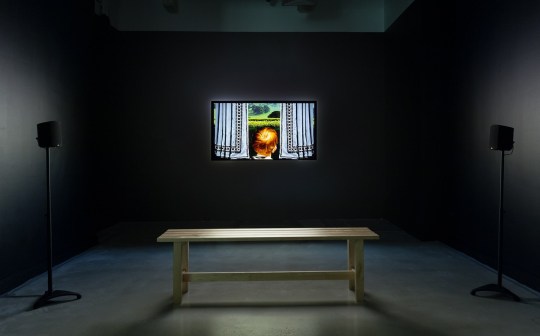
Harness the momentum of film festivals with these best practices.
Before creating a film festival submission strategy, check out these tips and tricks from Kathy Brew, guest curator of MoMA’s Doc Fortnight. Brew distilled her wide-ranging experience for an audience of filmmakers at NYFA in the fall of 2018; we’ve summarized her advice below.
First off, why submit to festivals?
Festivals offer filmmakers a variety of benefits. These range from sales and distribution opportunities to publicity and the prestige of being accepted as well as the possibility, in some cases, of winning awards. Festivals are also crucial for networking and generating interest in your film.
When should I think about submitting to festivals?
Consider festivals and who your intended audience is while you work on the film. Your audience will determine which festivals you apply to and help you set goals for the film. For example, are you trying to gain a big commercial distributor or are you passionate about educating the public about a certain subject? It’s also helpful to know festival deadlines and plan accordingly.
When is a film ready to be submitted?
If your film doesn’t feel ready by a festival deadline, don’t submit. Finish your film. This doesn’t mean you need to have the sound mastered, the coloring complete, and every detail finalized by the submission deadline, but festivals don’t want to see a rough cut that’s still changing.
Finally it’s time to apply. What’s my strategy?
Research festivals and think about who might screen a film such as yours. What did this festival screen last year? Who selects the films? Is there a jury? It’s also important to be realistic. The biggest and most famous festivals aren’t always the best fit for your film.
Festivals come in three varieties: large industry festivals, regional festivals, and constituency festivals (aimed at specific communities or subjects). When evaluating a festival, consider its reputation and what it’ll accomplish for you. What promotion (if any) will the festival provide? Will you be paid to attend, and is the filmmaker’s experience at the festival a priority? Will there be networking events or professional development opportunities? Will your film be given a favorable time slot?
Festival application fees add up, so do your research to find the right festival for you.
Hooray! I got into a festival. What’s next?
Attend your screening and the festival. If the festival takes place in a town or city in which you’re based or well-connected, try to fill the theater. Programmers will tell other programmers if the theater is packed. Also, be prepared with your own publicity materials on hand, like postcards and fliers.
Learn who attends the festival, identify all industry attendees, and always introduce yourself to the people you encounter. Someone you meet in line might prove to be an important connection in the future. Attend as many festival parties and events as you can.
It seems like one film can have many premieres. Why is that?
Yes, films often have everything from a world to a borough premiere. The industry ranks festivals according to prominence like so: world, international (first time screening outside country of origin), continental, national, regional, state, city, and so on.
Premieres exist to create buzz for your film and the festival. Some festivals will demand premiere status for a film to be eligible, which creates problems for filmmakers accepted to multiple festivals. In this case, your film can’t premiere at two festivals, and you will need to choose one. This is why you must consider what a festival will do for you. A name brand festival might sound like a good idea, but it may not offer you any coverage or it may screen your film at an inopportune slot. A smaller festival, though, may offer you the opening slot and promotion, which can ultimately lead to distribution opportunities and other deals.
What are my options for distribution?
Film distribution is the process of making a film available for viewing by an audience. Like festivals, distribution also follows a hierarchy with top-tier festivals seen as being at the top, followed by museums and theaters, semi-theatrical releases, TV/broadcast, educational market, home video, and VOD/SVOD (subscription video on demand). The thing to know about distribution is that it’s easy to move down the distribution ranks, but difficult to move up. Learn more about the various film distribution models.
If your film has commercial potential, consider finding a sales agent to represent you. Sales agents know festivals and will negotiate directly with distributors on your behalf.
How do I deal with festival rejection?
Different selection panels have differing thoughts on what makes a film the right fit for a festival. At some level, this process can be subjective; a rejection is far from a conclusive negative judgement on your film. Panelists can also change from year to year, so if you feel strongly that a festival is right for you, don’t hesitate to reapply.
What are some common mistakes to avoid?
Don’t rescind acceptance, even if it means delaying your confirmation. The festival programmer recognizes that a filmmaker may have submitted their film to several festivals and will be aware of the various deadlines. That said, you may not want to delay acceptance because you’re waiting to hear from a large industry festival like Sundance but don’t have any assurance you’ll be accepted. It’s best to begin getting your film in front of an audience.
And again, never send rough cuts. You want to be considerate of the panelists’ time.
What’s the general shelf life for a festival film?
Doc Fortnight only looks at films from the last two years. Many other festivals also follow defined time frames, so be sure to read the guidelines carefully. A topical film may have a more limited shelf life, while other films are more evergreen.
Selected Festivals and Helpful Resources
Capital A Festivals Sundance Cannes Berlinale Toronto International Film Festival
Documentary Festivals International Documentary Film Festival Amsterdam Hot Docs Visions du Réel Full Frame Sheffield Doc/Fest AFI Docs Dok Leipzig CPH:DOX
Shorts Festivals Clermont-Ferrand Tampere Film Festival International Short Film Festival Oberhausen
Additional Resources Docs for Sale British Council Film Festival Focus International Documentary Magazine POV Resource List
About Kathy Brew
Kathy Brew has been guest curator of the “Doc Fortnight: MoMA’s International Festival of Nonfiction Film and Media” since 2017. Previous positions include co-director of the Margaret Mead Film and Video Festival; curatorial consultant to the Reframe Collection, Tribeca Film Institute; programmer at Lincoln Center’s Scanners Festival (formerly the New York Video Festival); and series curatorial consultant, Reel New York, the WNET series for independent filmmakers. She is also a filmmaker whose award-winning documentary and experimental films have been shown in festivals, theaters, and online platforms.
Are you an artist or new organization, and interested in increasing your fundraising opportunities through NYFA Fiscal Sponsorship? No-fee applications are accepted on a quarterly basis and the next deadline to apply is December 30. Click here to learn more about the program and to apply.
Are you a filmmaker interested in finding, growing, and engaging with your audience? Click here for insights from three early-career filmmakers on audience-building. Sign up for our free bi-weekly newsletter, NYFA News, for the latest updates and news about Sponsored Projects and Emerging Organizations.
- Madeline Scholl, Program Officer, Fiscal Sponsorship
Image: Documentation of BRIC work-in-progress, Leigh Davis, Inquiry Into the ELE (Sponsored Project), Photo credit: Etienne Frossard
#fiscal sponsorship#nyfa fiscal sponsorship#business of art#professional development#filmmakers#madeline scholl#kathy brew#film festivals#instagram
1 note
·
View note
Text
Event | Film Festival Strategies: What They Are and Why You Need One

On September 20, learn from Kathy Brew, guest curator of The Museum of Modern Art’s “Doc Fortnight” Festival.
Film festivals are more than just opportunities to screen a film. They launch a film into theaters and other platforms, attract interest from distributors, provide important publicity, and constitute the primary way some films will be seen in front of a live audience. Deciding what you hope to get from your festival experience, choosing festivals that will best suit your film and your expectations (bigger is not always better), thinking of ways to attract the interest of programmers at your desired festivals, and making good use of the festivals that you get into are important elements of a festival strategy.
Program Title: Film Festival Strategies: What They Are and Why You Need One Date and Time: Thursday, September 20, 6:00 PM - 8:00 PM Location: NYFA, 20 Jay Street, Suite 740, Brooklyn, NY 11201 Cost: $15 for NYFA-affiliated artists (Fiscally Sponsored, NYSCA/NYFA Artist Fellows, Immigrant Artist Mentoring Program Artists) and $20 for the general public Register: RSVP here for Eventbrite tickets
About Kathy Brew Kathy Brew has been guest curator of the “Doc Fortnight: MoMA’s International Festival of Nonfiction Film and Media” since 2017. She was co-director of the Margaret Mead Film and Video Festival; curatorial consultant to the Reframe Collection, Tribeca Film Institute; programmer at Lincoln Center’s Scanners Festival (formerly the New York Video Festival); and series curatorial consultant, Reel New York, the WNET series for independent filmmakers. She is also a filmmaker whose award-winning documentary and experimental films have been shown in festivals, theaters, and online platforms.
Getting to NYFA Closest Subway to 20 Jay Street: * F to York Street station Next Closest Subway: * A to High Street/Brooklyn Bridge station
Event Accessibility New York Foundation for the Arts is committed to making events held at the NYFA office at 20 Jay Street in Brooklyn accessible. If you are mobility-impaired and need help getting to NYFA's office for events held on premises, we are pleased to offer complimentary car service from the wheelchair accessible Jay Street-MetroTech subway station courtesy of transportation sponsor Legends Limousine. Please email [email protected] or call 212.366.6900 ext. 243 between 9:30 AM - 5:30 PM at least three business days in advance of the event to coordinate. The elevator access point for pickup is at 370 Jay Street, on the NE corner of Jay and Willoughby Streets.
Are you an artist or new organization, and interested in increasing your fundraising opportunities through NYFA Fiscal Sponsorship? No-fee applications are accepted on a quarterly basis and the next deadline to apply is September 30. Click here to learn more about the program and to apply.
Are you a filmmaker interested in finding, growing, and engaging with your audience? Click here for insights from three early-career filmmakers on audience-building. Sign up for our free bi-weekly newsletter, NYFA News, for the latest updates and news about Sponsored Projects and Emerging Organizations.
Image: The Saxophonist (Fiscally Sponsored through NYFA) rehearsal with Beavin Lawrence, Nadya Encarnacion, and writer/director André Joseph, 2017, Photo Credit: Magnus Productions
#professional development#profdev#events#artsresources#entrepreneurship#documentary film#documentary filmmakers#filmmaker#filmmakers#nyfa fiscal sponsorship#nyfafiscalsponsorship#nyfa learning#nyfalearning#film festival#filmfestival#instagram
1 note
·
View note